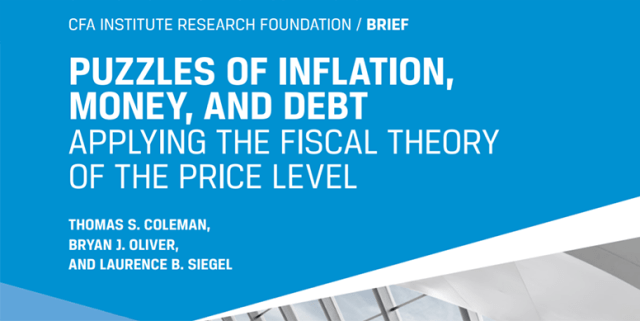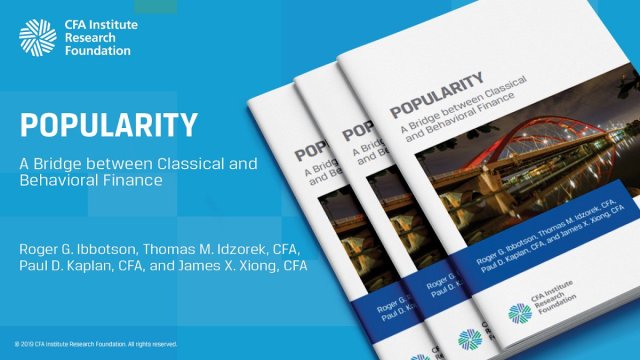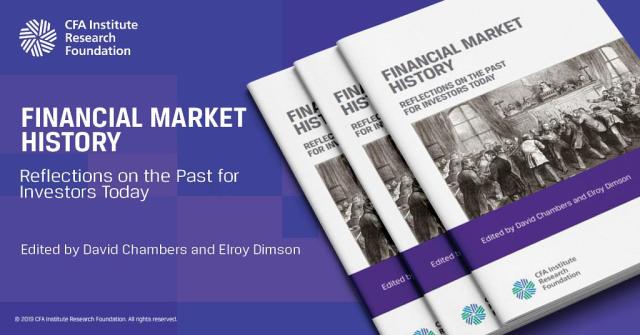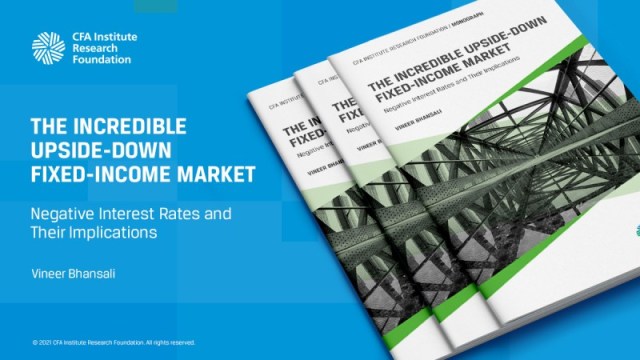[ad_1]
“I see evidence of mean reversion over time horizons from 3 years up to 15 years. It’s similar to business cycles having turned from 4-year cycles into 10-year cycles. We have many questions on structural changes. The evidence is really fuzzy, and usable or actionable evidence is almost zilch because of all this horizon uncertainty.” — Antti Ilmanen
Does the equity risk premium (ERP) vary depending on the term structure? Does reversion to the mean dictate that it will decrease the longer the time horizon?
In the third installment of the Equity Risk Premium Forum discussion, Laurence B. Siegel and fellow participants Rob Arnott, Elroy Dimson, William N. Goetzmann, Roger G. Ibbotson, Antti Ilmanen, Martin Leibowitz, Rajnish Mehra, and Jeremy Siegel explore these questions as well as the effect of noise on the value premium, whether the CAPE works internationally, and how to test a stock–bond switching strategy, among other topics.
Below is a lightly edited transcript of this portion of their conversation.
Martin Leibowitz: We’ve been talking about “the” risk premium. Will Goetzmann pointed out, though, that over the course of time, the risk premium has declined, depending on whether you invest for 40 years or 400. The idea of the risk premium being a term structure is very important. Because what premium you would demand if you’re investing for 1 year will be different from when you’re investing for 5 years or, say, 100 years. We would expect that to be a declining curve. That’s very important, because investors can choose their time horizon, just as they can in bonds. Over a long time horizon, the risk that is relevant for them may be much less.
Rajnish Mehra: No, Marty, that is not correct. You’re assuming mean reversion. If you have an IID [independent and identically distributed] process, then horizon shouldn’t matter. The result that Will got is precisely because there is a mean-reverting component in the dividend structure. If you have mean reversion, Marty, you are 100% correct. Risky assets will look less risky over time. But if the returns are IID draws, then the time horizon wouldn’t make a difference.
Jeremy Siegel: That is true, but I’m making one correction. You have to have a degree of risk aversion over 1 for that. You need two conditions for getting a higher equity allocation for longer time periods: mean reversion and risk aversion greater than 1.
Rob Arnott: Mean reversion has been a lively topic. It is weak on a short-term basis, which is one reason the CAPE is such a lousy predictor of one-year returns. But on longer horizons, it’s pretty good. Jeremy, you’ve written about this, where 30-year S&P volatility, when annualized, is distinctly lower than the volatility of 1-year returns. This comes from the fact that there is mean reversion over long horizons. For example, 10-year real returns for US stocks have a –38% serial correlation with subsequent 10-year earnings; and 10-year real earnings growth has a –57% correlation with subsequent 10-year earnings growth. That means there is mean reversion. But it acts over a long enough horizon that most people think that returns are IID.
William N. Goetzmann: I just have to put in a word here. I spent the first 10 years of my early research career on the weakness of the mean reversion evidence. But then the 2013 Nobel Prize award cited Bob Shiller’s work demonstrating the predictability of stock returns. The evidence is always a bit marginal and depends on your assumptions and on where you get the data. And, as Amit Goyal and Ivo Welch have shown, sometimes it sort of falls in the statistically significant zone, and sometimes it kind of falls out of it. It depends on when you’re doing your measurement. So, it’s a bit of a chimera to say that we know for sure. I’m not entirely convinced that you would bet your wealth on this reversion process.
Antti Ilmanen: When I look at the literature, I see evidence of mean reversion over time horizons from 3 years up to 15 years. It’s similar to business cycles having turned from 4-year cycles into 10-year cycles. We have many questions on structural changes. The evidence is really fuzzy, and usable or actionable evidence is almost zilch because of all this horizon uncertainty.
By the way, I wanted to comment earlier on mean reversion in a different context, not about the premium but about the riskiness of stocks being related to the time horizon. There is a counterargument by Lubos Pastor and Robert F. Stambaugh that equity risk doesn’t decline with horizon. When you take into account parameter uncertainty — the fact that we don’t know how big the equity premium is — their analysis suggests that risk in equities doesn’t decline with the time horizon and, if anything, rises with it.
Visualizing Returns over Time: Trumpets and Tulips
Roger Ibbotson: Even if returns were IID, what you would get, of course, is a lognormal spreading out of wealth outcomes over time — times the square root of time. And the compounded return is divided by the square root of time. So, you get two entirely different shapes, depending on whether we’re talking about the compound return or just your ending wealth. Over time, ending wealth spreads out, in the shape of a tulip. The compound annual return, in contrast, is averaging out and looks more like a trumpet.
The tulips and trumpets apply only if returns are IID. If there’s some other sort of return pattern, then the shapes will be different.
Coping with Parameter Uncertainty
J. Siegel: Antti, I want to return to what you said about Pastor and Stambaugh. Parameter uncertainty also applies to bond returns — you don’t know what the parameters are for the real rcapeisk-free rate either.
That doesn’t mean that you’d change your stock/bond allocation even if you buy this model. They seemed to imply that it did. I pointed out that that parameter uncertainty would be true of every asset. Furthermore, even TIPS are not risk free, as they adjust with a lag, and would suffer greatly in hyperinflation. Every asset has that same extra degree of uncertainty, what’s called parameter uncertainty.
Noise
I also just want to mention one thing in response to what Rob said about using fear for value investing. All you need is a noisy market, where there are shocks to prices away from equilibrium, plus or minus, to have value “work.” There might be more than just noise in the market, but noise is all you need. Prices just flip up and down. This has nothing to do with sentiment, overreaction, underreaction, or anything like that — just price movement unrelated to fundamentals. And that will yield a value premium, I believe. That’s it. You don’t need anything else.
Does CAPE Work Internationally?
Elroy Dimson: Paul Marsh and I tried the Shiller cyclically adjusted price-to-earnings ratio (CAPE) on a large number of different countries. We took all of the countries that had data from 1900 onwards. Of course, we don’t have price/earnings ratios. I doubt that earnings in the United States from a century ago are comparable to earnings calculated today, but they’re better than earnings figures for other countries, which we don’t have at all. What we do have is dividends, and those numbers are reliable.
In the United States, we can look at the relationship between the Shiller CAPE10 and what could be called the Shiller CAPD10 (cyclically adjusted price/dividend ratio). D10 is dividends averaged over a cycle of 10 years. We extrapolate from that relationship to get a pseudo-CAPE for all the countries.
We created some trading rules to move away from equities when the Shiller pseudo-CAPE is telling you that you should be out of equities. For almost all countries, the trading strategy reduces your long-term return from that country. It reduces the return even though it sometimes tells you to get out of equities for moderately good reasons, because on balance, equities give you a premium and you missed the premium. So, the more times you respond to a CAPE signal in a given period, the lower your long-term return is going to be.
Laurence Siegel: Doesn’t part of this result from building in a 10-year lookback as Bob Shiller did? That seems awfully long to me. The world was a very different place 10 years ago. Or did you look at different periods?
Dimson: We did it with 1, 2, 5, and 10 years. The conclusions are the same. The Shiller signal is an inaccurate signal, and the number of times that it takes you out of equities and into something else, typically cash, whatever the lower-risk alternative would be, the more costly it is to pursue the Shiller strategy. So, I’m not as convinced as most of you are that CAPE works. I think CAPE maybe works in the United States.
When we looked at different countries, it only really worked in the UK. In the UK, it took you into equities in late 1974 when share prices were very depressed, and then in the first six weeks or so of 1975, the stock market doubled. In that one instance, CAPE produced a very large benefit. But that’s an anomaly — it’s one observation.
What Is the Right Benchmark for Testing a Stock–Bond Switching Strategy?
Arnott: Elroy, the relevant benchmark for a switching strategy would be a static mix strategy. Not equity returns, but a balanced portfolio return that matches your average equity exposure.
Dimson: No, that’s using hindsight. We roll forward, and we had alternative strategies that only used either past data or contemporaneous data from other markets. If you know what is going to happen, if you know what the unchanging passive strategy would be, then Shiller wins hands down. But that’s not what we looked at.
L. Siegel: I think he’s saying your benchmark should be of comparable risk, so it should match the amount of equity exposure on average over time in your CAPE strategy up to that point, whether it’s 50/50 or 60/40 or some other fixed mix.
Dimson: No, not at all, Larry. For most of the historical period, having anything close to half your money in equities would have been so crazy that nobody would have imagined doing it. You have to use data that exists at the point of measurement and then model that going forward. You can’t take a peek at what’s going to happen in the next century and conclude that 60/40 is a plausible asset mix.
L. Siegel: Why do you think it was crazy to have half your money in equities if there was a supply of equities that would have allowed you to do that?
Dimson: Because the supply — the aggregate value — wasn’t there. I know the British figures better than I know them for other countries. The proportion of equities was something like 15%, and the rest was fixed income.
L. Siegel: Maybe you just use the aggregate supply of securities as the benchmark.
Dimson: You could do that. We didn’t. I think that would lead you in the same direction.
Leibowitz: Even in the UK, the fixed-income market was mostly government bonds.
Dimson: Outside of the United States, there are no markets with a long-term history for corporate bonds.
Goetzmann: The other thing to point out, though, is that if you’re flipping between cash and stocks, it’s not the same risk as a 50/50 portfolio. The reason is that the probability of an overall portfolio decline of 20% is larger for the flipping strategy than for the 50/50 strategy, because the flipping strategy is sometimes all equities and the 50/50 strategy is always diversified. So, a benchmark that is 50/50 or 60/40 is not the same risk profile at all. If you’re concerned about the magnitude of losses, you’re facing a higher chance of something extreme happening if you’re flipping.
Dimson: Yes. This was not a Journal of Finance paper. It appeared in our yearbook in 2013. People were interested in it. One would do much more if this were an academic paper.
Arnott: I’m guessing more practitioners read it than read the Journal of Finance.
Goetzmann: If you improve on this, it might be worthy of the Financial Analysts Journal, Elroy.
Dimson: If I do a few more like that, I might get tenure.*
For more on this subject, check out Rethinking the Equity Risk Premium from the CFA Institute Research Foundation.
If you liked this post, don’t forget to subscribe to the Enterprising Investor.
* Dimson has been tenured since the 1970s.
All posts are the opinion of the author. As such, they should not be construed as investment advice, nor do the opinions expressed necessarily reflect the views of CFA Institute or the author’s employer.
Image credit: ©Getty Images/Stefano Madrigali
Professional Learning for CFA Institute Members
CFA Institute members are empowered to self-determine and self-report professional learning (PL) credits earned, including content on Enterprising Investor. Members can record credits easily using their online PL tracker.
[ad_2]
Image and article originally from blogs.cfainstitute.org. Read the original article here.






